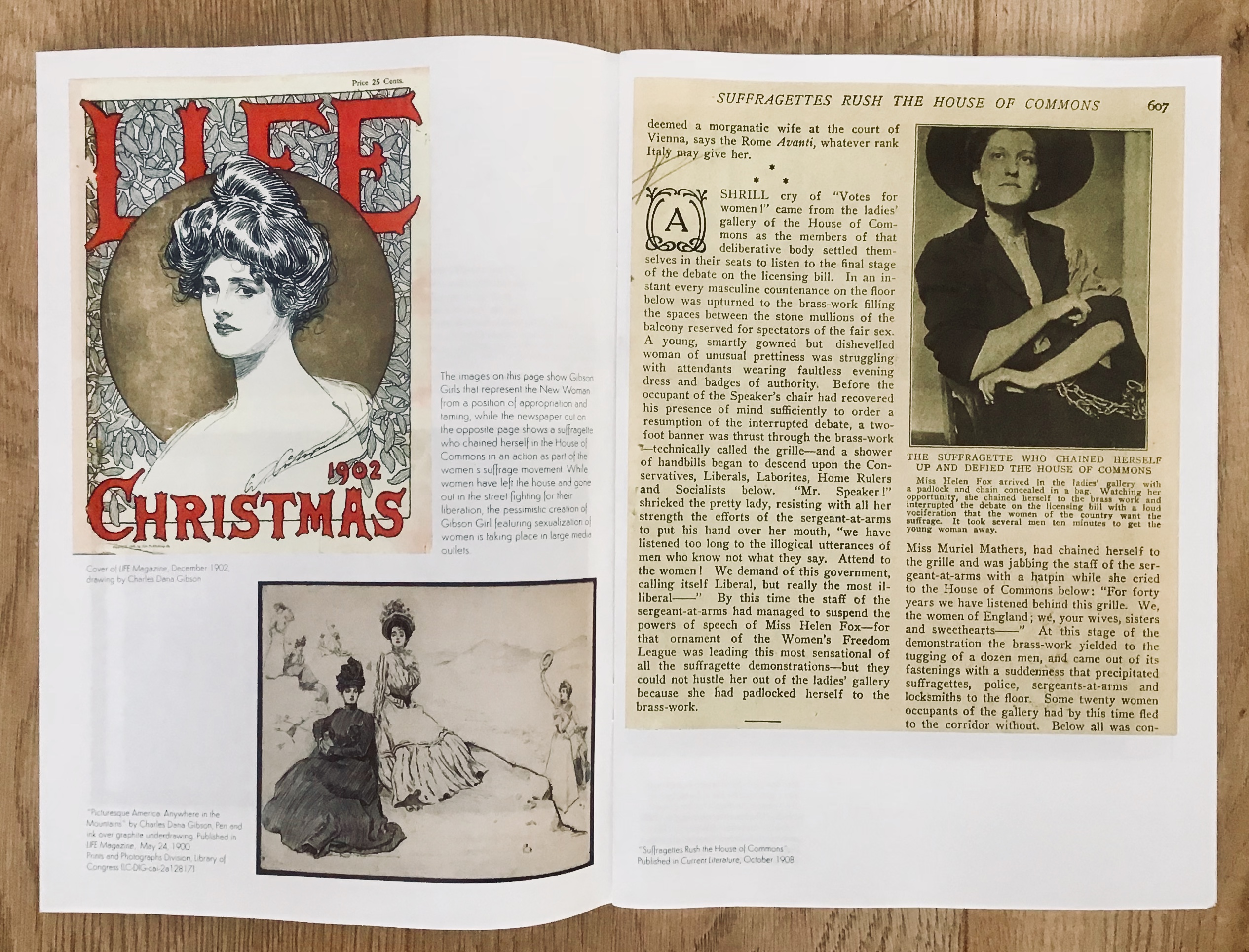
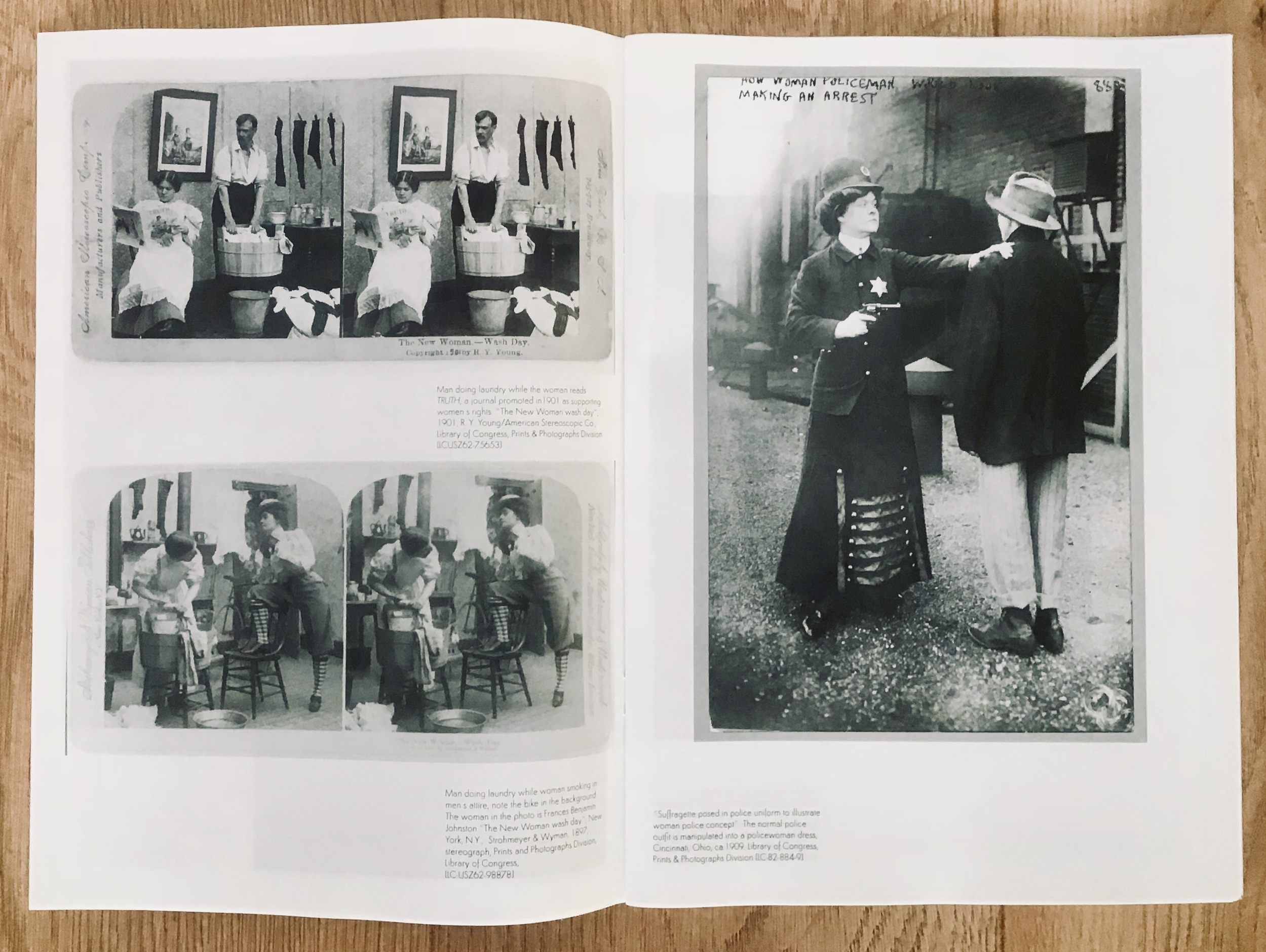
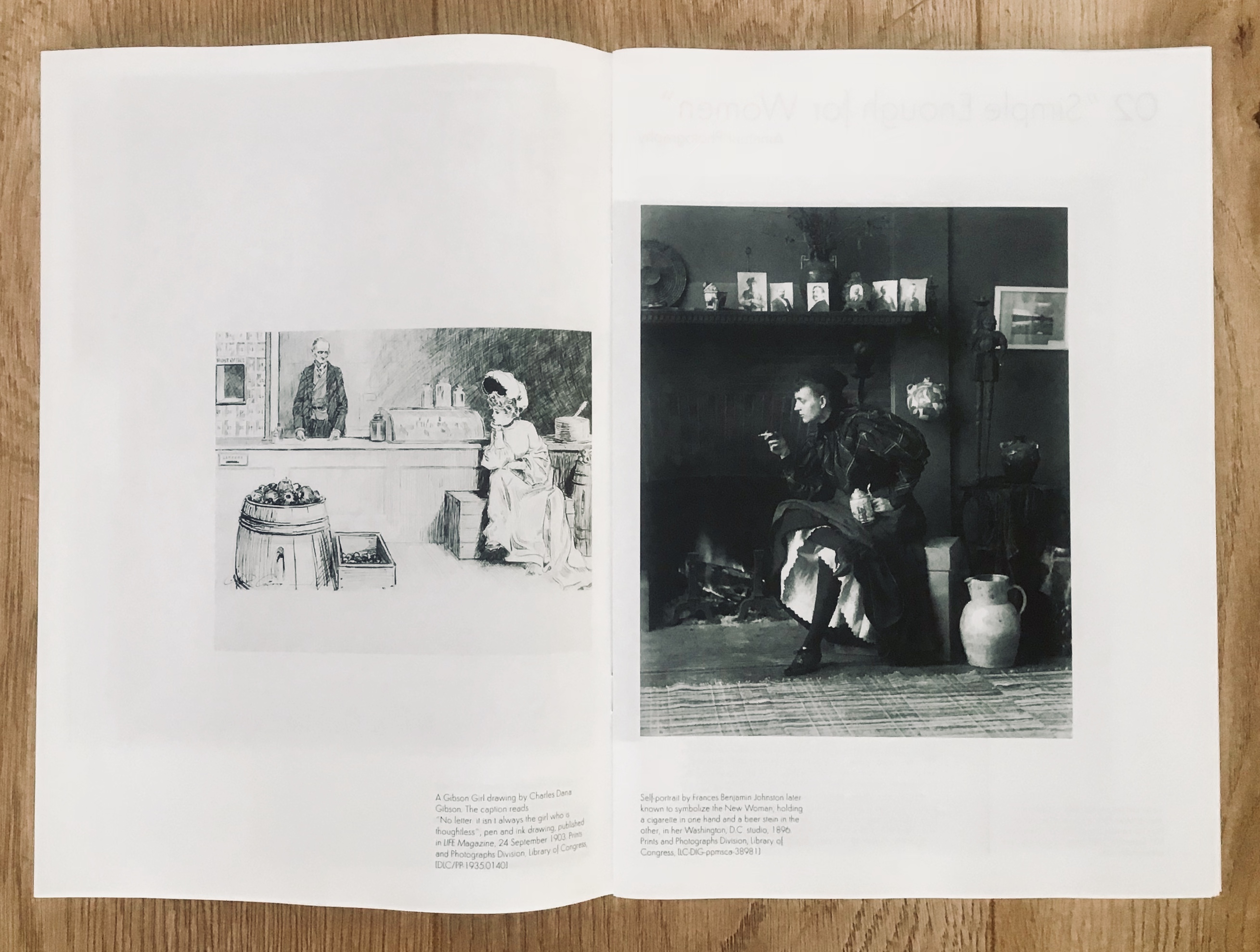
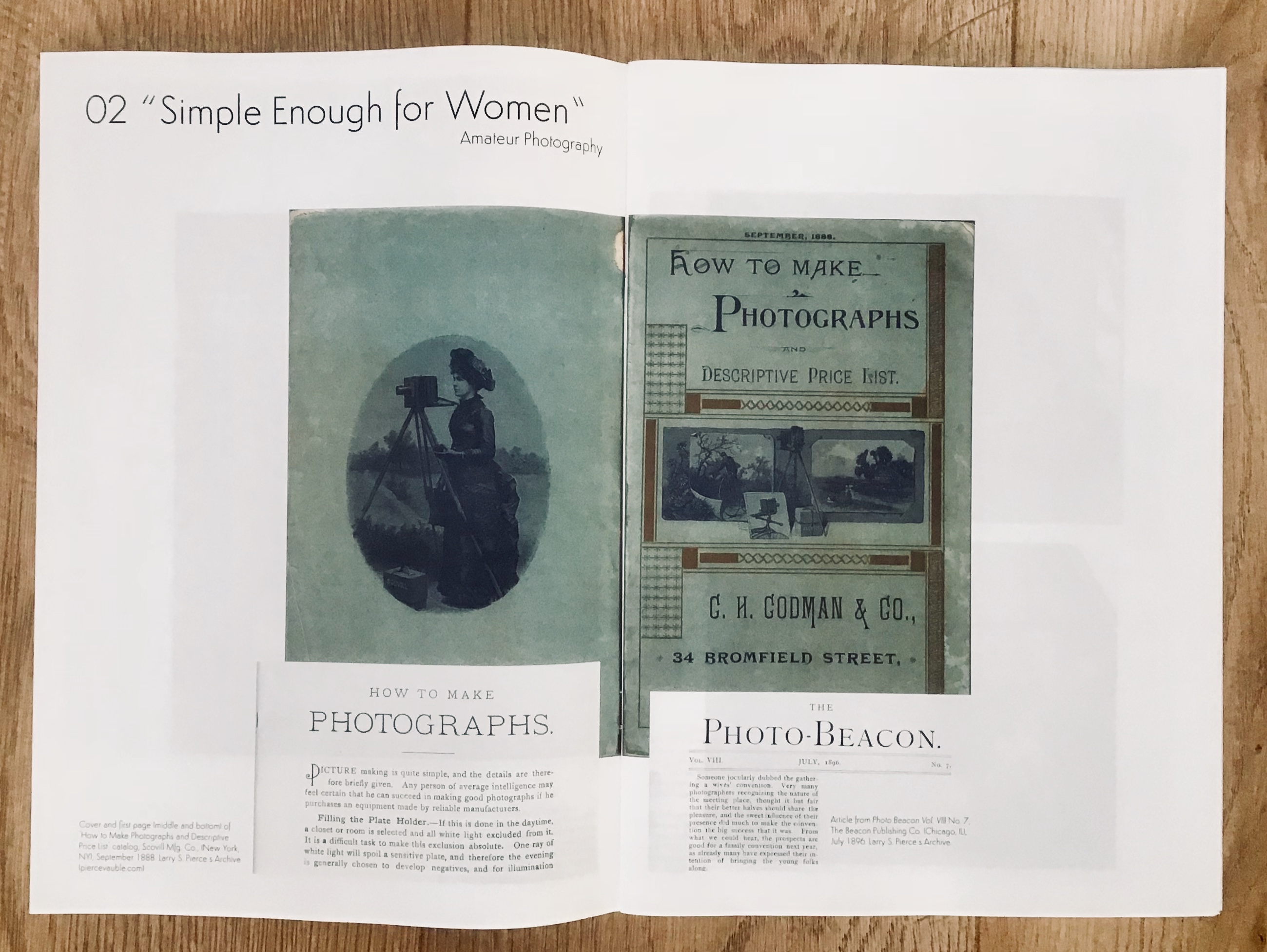
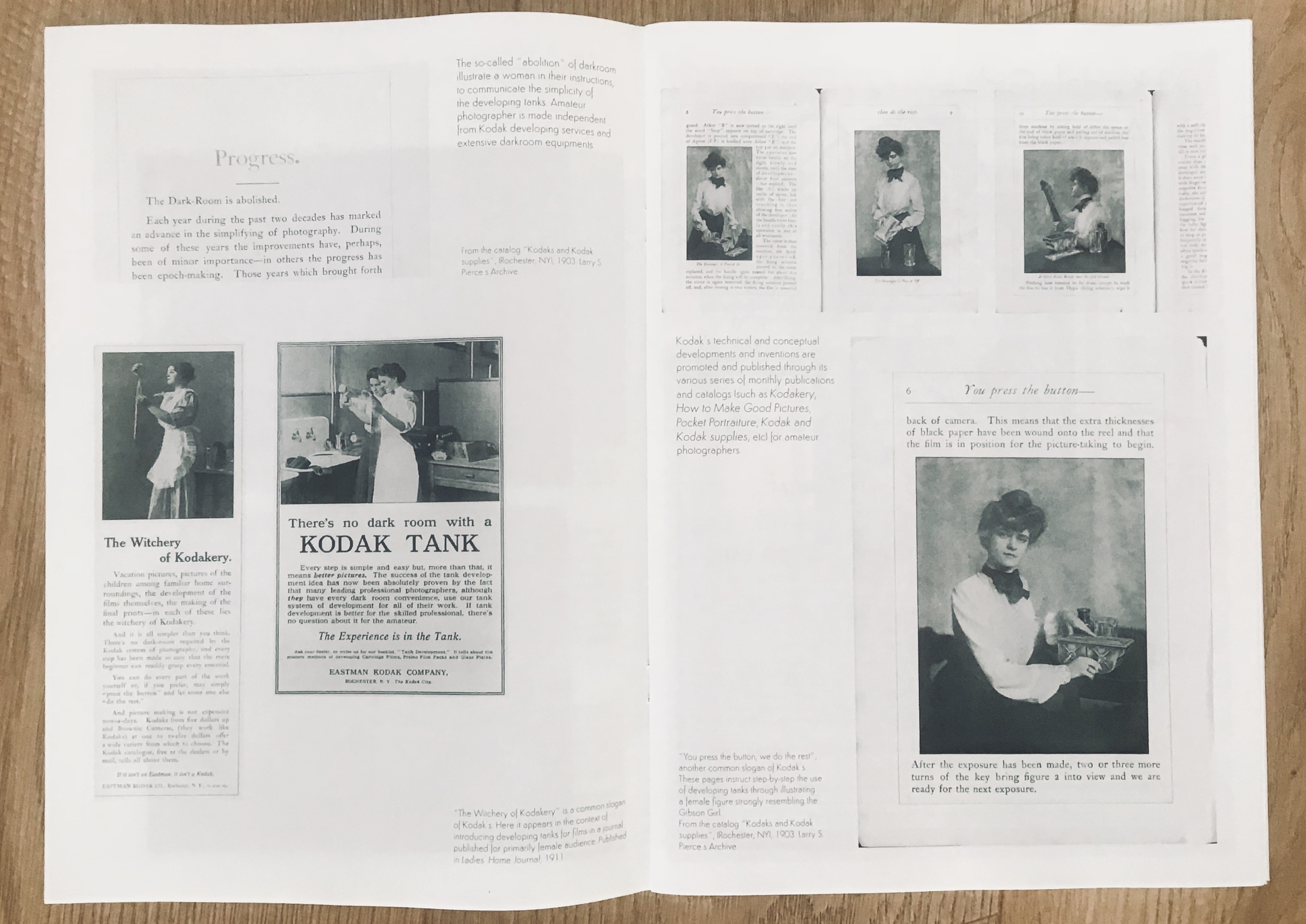




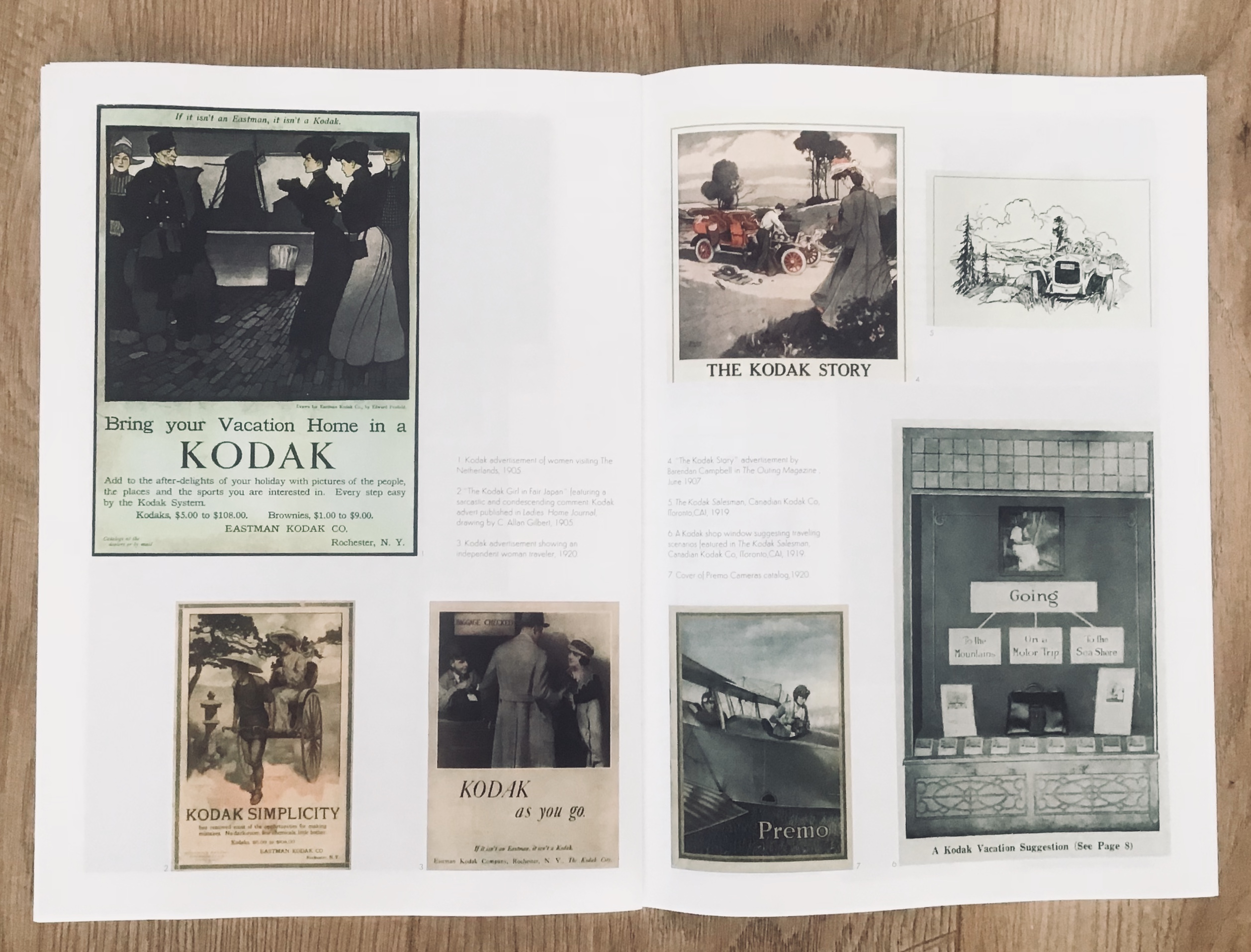

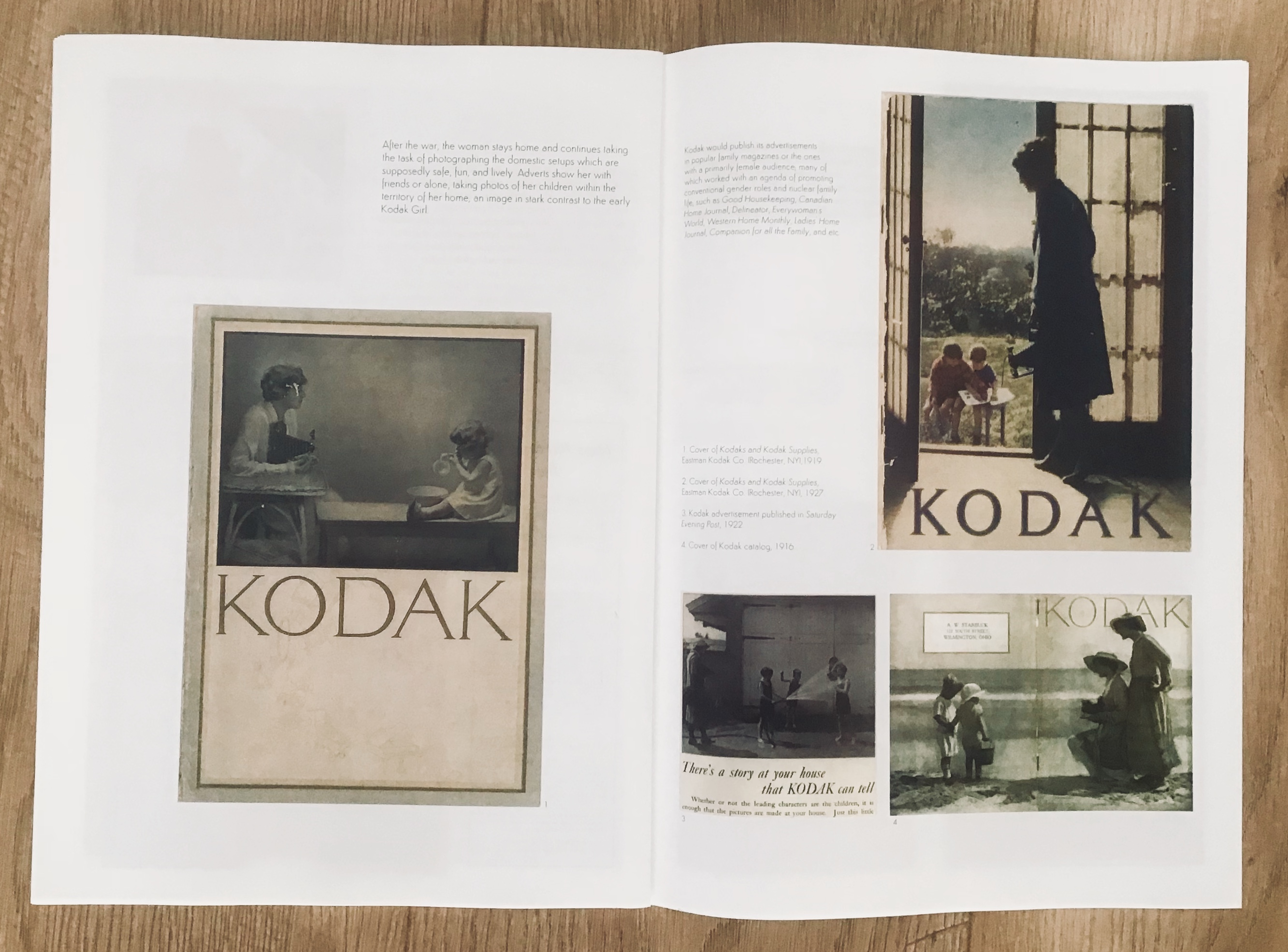


Sarmad Book Four
“Amateur Photography”, a Gender-Based Construct
“Amateur Photography”, a Gender-Based Construct
A4 (21x29.7 cm)
44 pages
Digital color print
12 € + shipping
Edited and designed by Sarmad teamResearch and writing by Sarmad Editors
The late 19th century is the time of introduction of hand cameras, brownies and pocket cameras, which revolutionized the photography industry by providing the possibility of the photographer leaving th studio. With the introduction of these cheaper and more accessible photographic equipment, the notion of ‘amateur photography’ was born, at the heart of which stood the female figure, bearing the basic premise that the new equipment was so easy to use that anybody with an ‘average intelligence’ could use them, ‘even the ladies’.
It is with such patriarchal and condescending assumption that the photography industry appropriates the figure of the New Woman and gives birth to a whole marketing campaign with the female (amateur) photographer at its center. The iconic figure of the Kodak Girl is the embodiment of such appropriation.
The New Woman, a cultural image emerging in the second half of the 19 th century and gaining transnational dimensions towards the end of the century, came to epitomize modern urban femininit through its diverse manifestations in literature and visual culture. The spread of the image of the New Woman at a global scale depended to a great extent on the development of visual technologies of mass production.
The role of women in relation to the photography industry (and particularly the notion and business of amateur photography) goes through fundamental changes during the first half of the 20 th century.
Through a dazzling cycle, it starts from the supposedly ‘progressive’ idea of catering to the new independent woman of the new century (who leaves the domestic realm ‘traveling’ freely on her own) back to the conventional gender norms focusing on the wife- who uses the camera to record family memories, the interiors of home, her children and her pets. The New Woman turns into the Wife an the ‘outdoors’ to ‘home’.
This is the opening publication in a series of books at Sarmad Magazine, which investigates the development of photography, both as an industry and a medium of fine arts, in relation to conventional gender assumptions. Given the complexity and broadness of the subject, this book aims to give an overview and to argue for the relevance and necessity of such work. This book lies in the context of a larger ongoing project, Unmaking Image, at Sarmad Magazine which deals with the relationship between image making and power.
It is with such patriarchal and condescending assumption that the photography industry appropriates the figure of the New Woman and gives birth to a whole marketing campaign with the female (amateur) photographer at its center. The iconic figure of the Kodak Girl is the embodiment of such appropriation.
The New Woman, a cultural image emerging in the second half of the 19 th century and gaining transnational dimensions towards the end of the century, came to epitomize modern urban femininit through its diverse manifestations in literature and visual culture. The spread of the image of the New Woman at a global scale depended to a great extent on the development of visual technologies of mass production.
The role of women in relation to the photography industry (and particularly the notion and business of amateur photography) goes through fundamental changes during the first half of the 20 th century.
Through a dazzling cycle, it starts from the supposedly ‘progressive’ idea of catering to the new independent woman of the new century (who leaves the domestic realm ‘traveling’ freely on her own) back to the conventional gender norms focusing on the wife- who uses the camera to record family memories, the interiors of home, her children and her pets. The New Woman turns into the Wife an the ‘outdoors’ to ‘home’.
This is the opening publication in a series of books at Sarmad Magazine, which investigates the development of photography, both as an industry and a medium of fine arts, in relation to conventional gender assumptions. Given the complexity and broadness of the subject, this book aims to give an overview and to argue for the relevance and necessity of such work. This book lies in the context of a larger ongoing project, Unmaking Image, at Sarmad Magazine which deals with the relationship between image making and power.